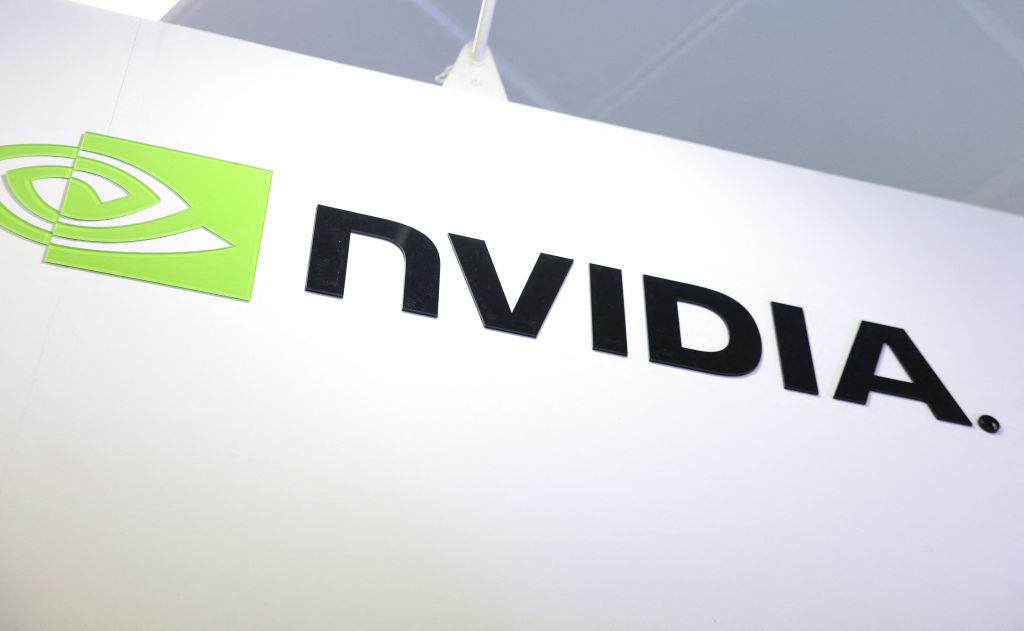How Much Do I Need to Retire? A Financial Professional Breaks Down Your Options
What it all boils down to is will you be comfortable in retirement? Some people may rely on formulas, while others just aim for $1 million nest egg.


How much is enough to save for retirement? It's the million-dollar (or more) question every pre-retiree is asking, and it can be incredibly confusing and overwhelming to answer.
I've come across many articles, videos and statistics about how much you need to save to retire comfortably. Clients often come to me for guidance on this.
Sometimes the guideline is to be able to generate a certain income level with your investments. The number I frequently hear is associated with that target is 80% to 90% of your pre-retirement income.

Sign up for Kiplinger’s Free E-Newsletters
Profit and prosper with the best of expert advice on investing, taxes, retirement, personal finance and more - straight to your e-mail.
Profit and prosper with the best of expert advice - straight to your e-mail.
The Kiplinger Building Wealth program handpicks financial advisers and business owners from around the world to share retirement, estate planning and tax strategies to preserve and grow your wealth. These experts, who never pay for inclusion on the site, include professional wealth managers, fiduciary financial planners, CPAs and lawyers. Most of them have certifications including CFP®, ChFC®, IAR, AIF®, CDFA® and more, and their stellar records can be checked through the SEC or FINRA.
Others say there's a magic savings number. For some, a happy retirement is worth $1 million. For others, it's a multiple of the soon-to-be retiree's employment income.
So, which is it? Should you focus on replacing a certain percentage of your pre-retirement income? Or should you focus on saving a certain amount?
Let's take a look at how three popular choices break down.
1. Percentage of income: 80% to 90% of pre-retirement income
I think the real question associated with aiming for an income level is determining whether you could pay your bills with 10% to 20% less pay. For most people, the answer is probably not.
Most of us are used to anticipating a 3% to 4% annual raise pre-retirement. So, a 10% to 20% drop in income would be challenging to live off.
The reality is — the same monthly bills that existed pre-retirement will exist post-retirement. While some associated costs may go away, such as 401(k) contributions and/or workday expenses like a bus ticket or a purchased lunch, there are often new expenses that enter monthly retirement budgets.
Typically, new expenses come in the form of entertainment. When you are retired, every day is Saturday. Just think about how you spend your money during the workday vs on a day off.
As a result, breaking down the numbers, if you are fortunate to have the ability to max out your 401(k) every year, aiming to generate an annual income that is 80% to 90% of your pre-retirement salary, may be the method that works best for you. If not, it might be a much tighter squeeze.
2. Multiple of working income: 12 times your pre-retirement salary
Some experts also claim you should have 12 times your annual working income in retirement savings. For high earners, this is a substantial number.
As an example of what this value will look like, the median weekly earnings for workers in the first quarter of 2025 were $1,194, according to figures released by the Bureau of Labor Statistics in April 2025. Fifty-two weeks of that amount gets you $62,088 a year. If you multiply that by 12, you get $745,056, and let's assume that is in a retirement account.
In financial planning, a common withdrawal strategy is taking 4% of your retirement savings out each year in retirement. If you did this on the $745,056, that equals $29,802.24 per year, leaving this worker very short of their employment income.
If you factor in Social Security, that may be enough to make retirement work, but it is an uncertain strategy that may not be achievable because of the worker's ability to save, their risk tolerance, time horizon, inflation or a combination of any of these factors.
3. Set savings value: $1 million
Other specialists recommend saving $1 million for retirement. This is a wonderful savings accomplishment to have achieved. It makes retirement math simpler…, but is it necessary? Is it not enough? It all depends on your monthly expenses.
If we apply the 4% withdrawal rule to this nest egg sum, the annual amount comes out to $40,000 per year. If you add this to your estimated annual Social Security pay, you may find the number to be greater than, less than or equal to your working pay.
Looking for expert tips to grow and preserve your wealth? Sign up for Building Wealth, our free, twice-weekly newsletter.
Similarly, where the million dollars is allocated matters as it can have drastic tax implications, shrinking or inflating the actual lump sum.
If someone's nest egg is all Roth IRA contributions, it is a bigger sum in practice, because taxes have already been taken out. If the sum is in a traditional investment vehicle, taxation will reduce that amount as it is implemented in retirement.
So where does that leave us? In reality, there likely isn't one set number that will work for everyone in retirement. Knowing your goals and priorities pre- and post-retirement is a more worthwhile pursuit.
My philosophy
My goal with clients is usually to set them up with a similar amount of retirement income as they were earning pre-retirement.
Unfortunately, this method may not lend itself well to a perfect round number and varies immensely from person to person, but it is one of the best ways to create a safety net that is customizable and tailored to each individual.
Fortunately, there are many retirement planning vehicles available in the market that can help each investor pursue their goal.
In order to identify what makes the most sense for you and your financial plan, work with a qualified financial professional to determine your risk profile and carve out ways to make your money work for you.
Content in this article is for general information only and not intended to provide specific advice or recommendations for any individual. All investing involves risk including loss of principal. No strategy assures success or protects against loss. CORP-8058592.1-0625-0727
Related Content
- The Minimum Savings You Need To Retire in All 50 States
- Five Ways to Catch Up on Retirement Savings
- The 'Die With Zero' Rule of Retirement
- Crazy Markets Shouldn't Derail Your Retirement if You Follow This Financial Pro's Plan
- To Insure or Not to Insure: Is Life Insurance Necessary?
Profit and prosper with the best of Kiplinger's advice on investing, taxes, retirement, personal finance and much more. Delivered daily. Enter your email in the box and click Sign Me Up.

Isaac Morris is a registered LPL Financial Advisor with TruStage Wealth Management Solutions. Isaac works at Summit Financial Advisors located at Summit Credit Union where he helps individuals and families pursue their financial goals by providing financial advice based on 10-plus years of experience in the industry. He is deeply committed to his clients’ financial well-being and strives to listen intently to their needs and concerns to provide them with just the right help for their unique circumstance.
-
 I’m 53, make $500,000 a year and live paycheck to paycheck. I want to retire at 65 but we only have $200,000 saved. Am I nuts?
I’m 53, make $500,000 a year and live paycheck to paycheck. I want to retire at 65 but we only have $200,000 saved. Am I nuts?We asked an expert wealth planner for advice.
-
 So You Want to Age in Place: What Most People Overlook
So You Want to Age in Place: What Most People OverlookIf you want to age in place in your current home, near the beach or in the mountains, one risk could upend your plans. Here's what you need to know.
-
 The 100 Minus Your Age Rule May Be the Easiest Asset Allocation Strategy, but Is It the Best?
The 100 Minus Your Age Rule May Be the Easiest Asset Allocation Strategy, but Is It the Best?The 100 Minus Your Age rule is a quick, back-of-the-envelope calculation that can help determine your appropriate allocation to stocks and bonds.
-
 I'm a Wealth Adviser: If You're a DIY Investor, Don't Make These Five Mistakes
I'm a Wealth Adviser: If You're a DIY Investor, Don't Make These Five MistakesEven though you may feel confident because of easy access to investing information, you may be making mistakes that could compromise your long-term performance. Here's what you should know.
-
 Building a Business That Lasts: The Critical Steps to Avoid Blunders
Building a Business That Lasts: The Critical Steps to Avoid Blunders'Another Way' author David Whorton offers advice on how to build an 'evergreen' business that endures by avoiding common pitfalls that can lead to failure.
-
 Stocks Struggle to Start Nvidia Week: Stock Market Today
Stocks Struggle to Start Nvidia Week: Stock Market TodayAnother important week for the stock market starts on a risk-off note.
-
 Gen X? Challenges Lie Ahead as Retirement Nears
Gen X? Challenges Lie Ahead as Retirement NearsTapping home equity and working longer are key strategies that can help overcome a savings shortfall.
-
 I'm a Financial Pro: Why You Shouldn't Put All Your Eggs in the Company Stock Basket
I'm a Financial Pro: Why You Shouldn't Put All Your Eggs in the Company Stock BasketLimit exposure to your employer's stock, sell it periodically and maintain portfolio diversification to protect your wealth from unexpected events.
-
 How Will the One Big Beautiful Bill Shape Your Legacy?
How Will the One Big Beautiful Bill Shape Your Legacy?The One Big Beautiful Bill Act removes uncertainty over tax brackets and estate tax. Families should take time to review estate plans to take full advantage.
-
 Nvidia Earnings: Live Updates and Commentary August 2025
Nvidia Earnings: Live Updates and Commentary August 2025Nvidia's earnings event is just days away, and market participants are zeroed in on the AI bellwether's quarterly results.